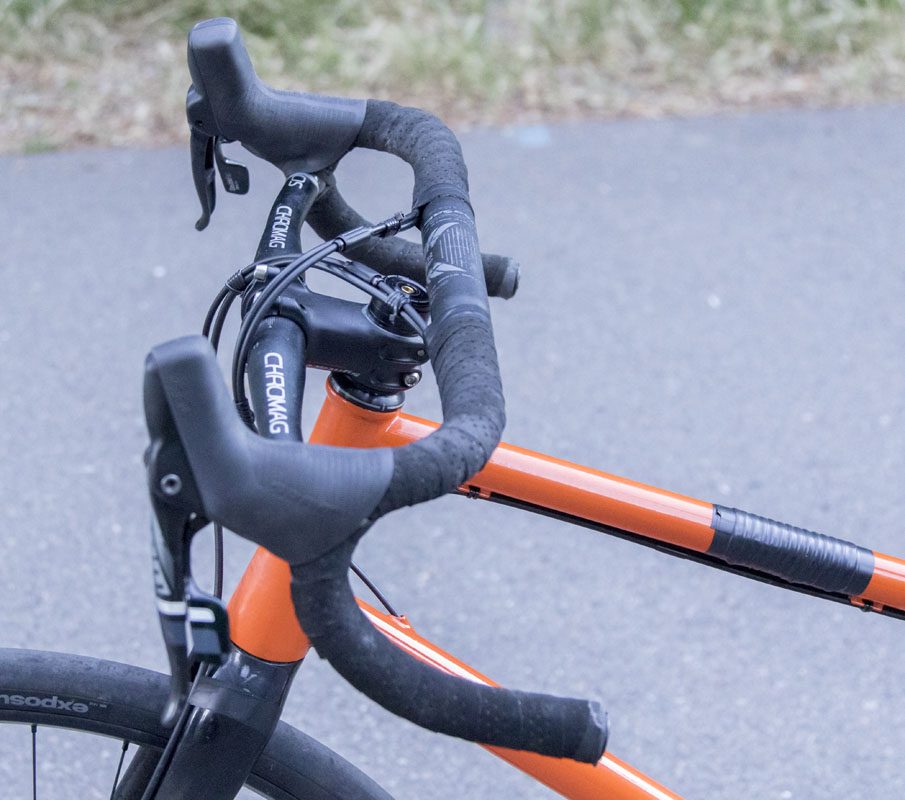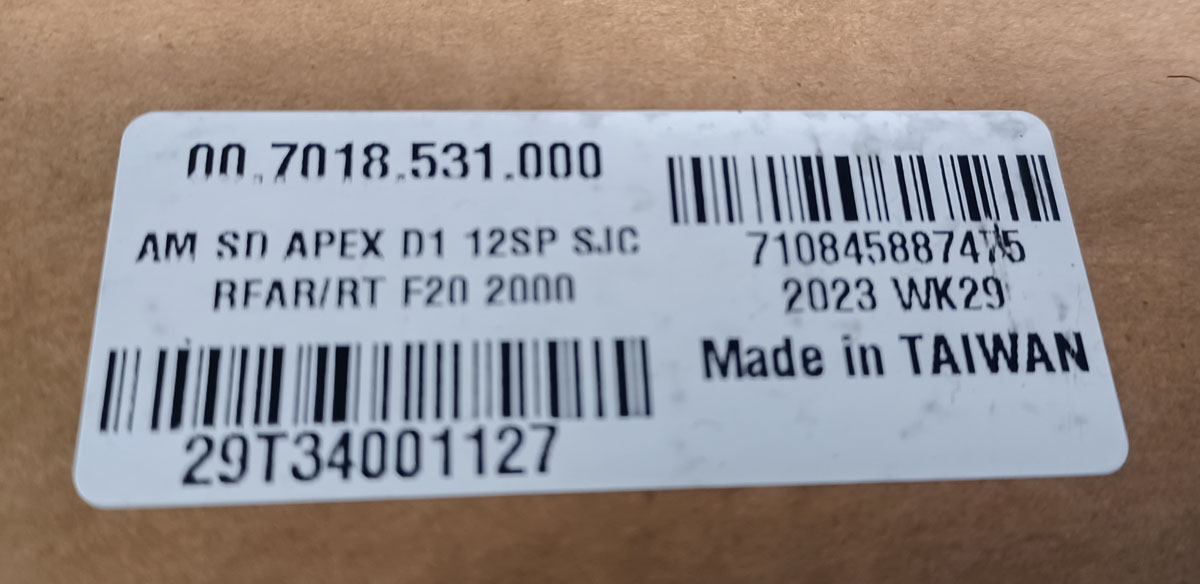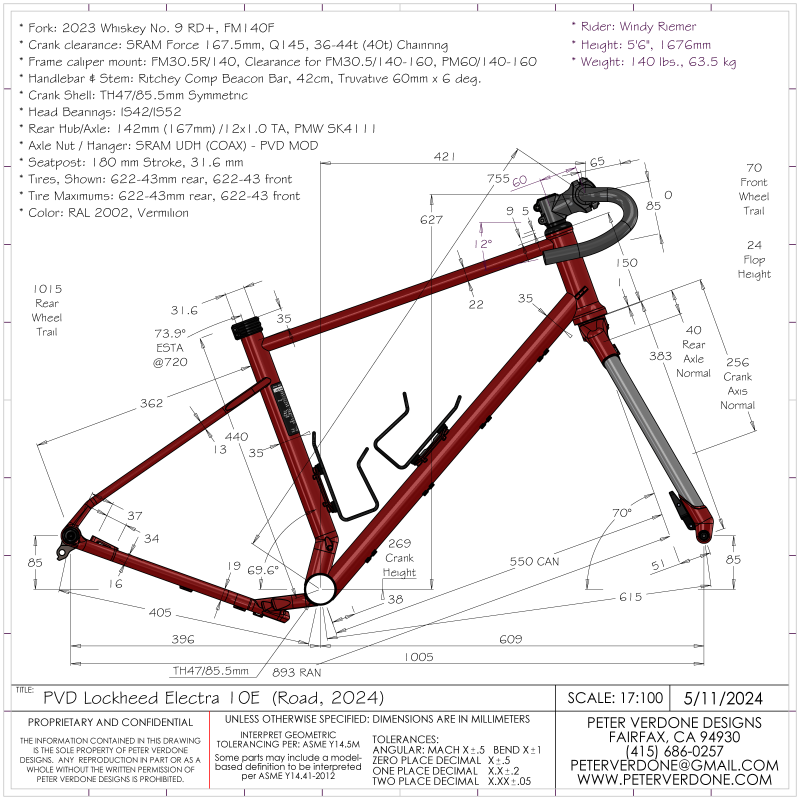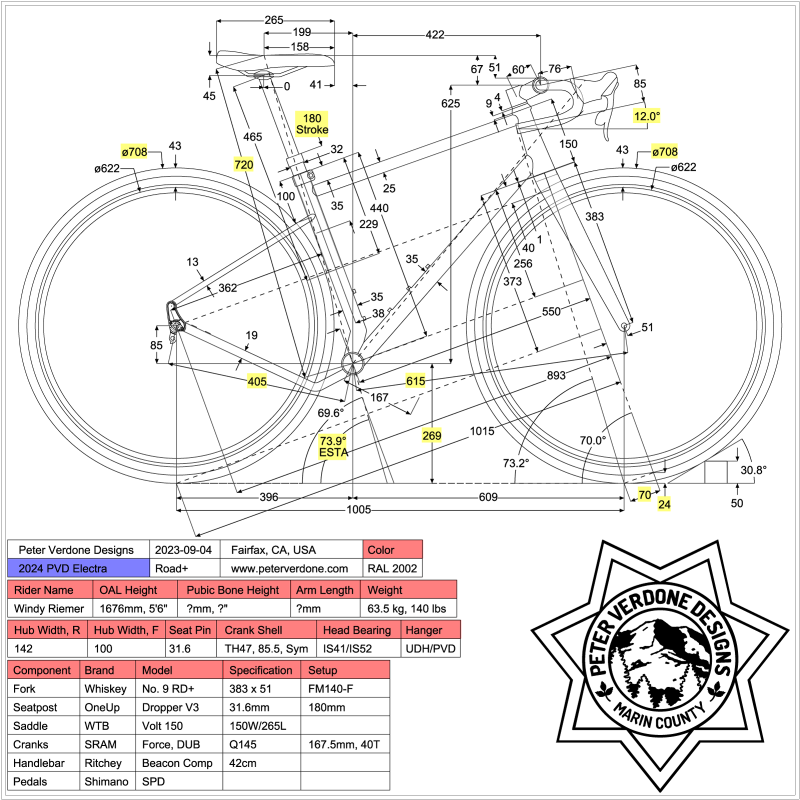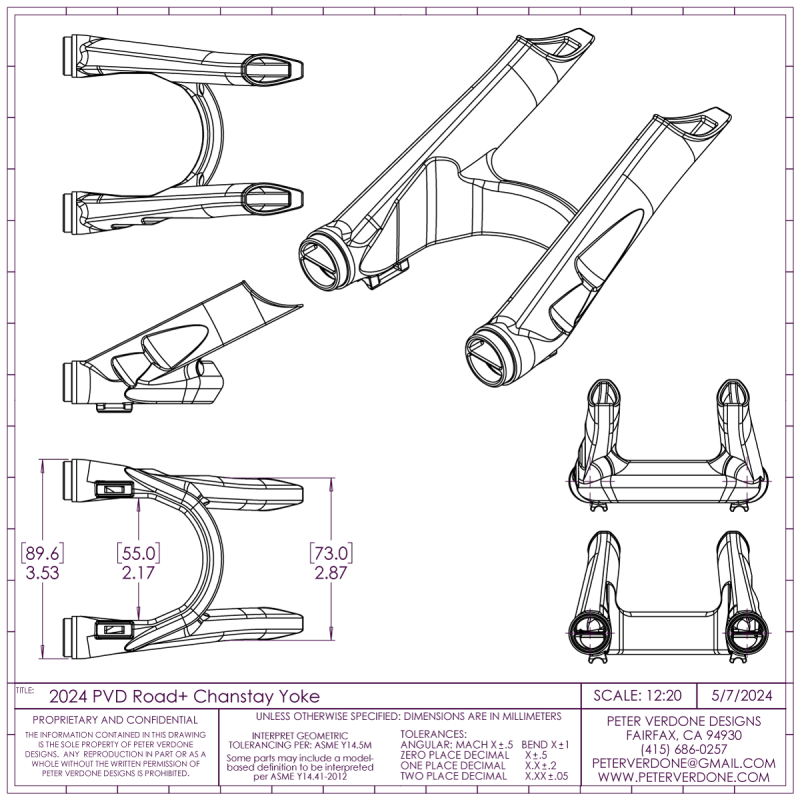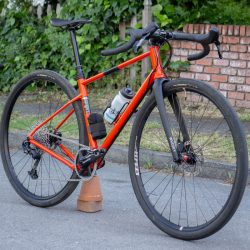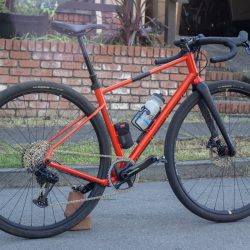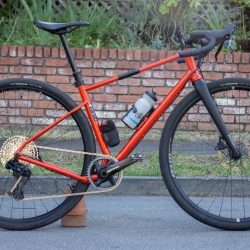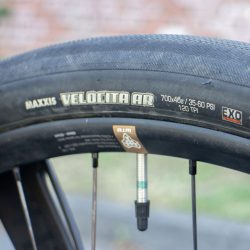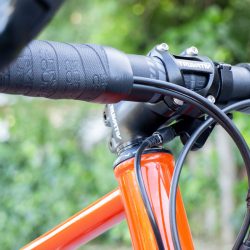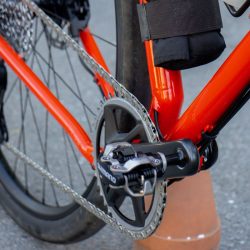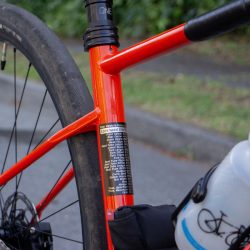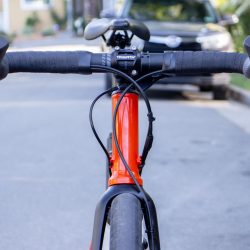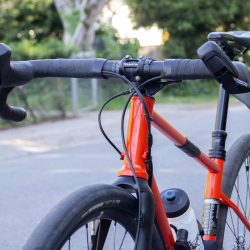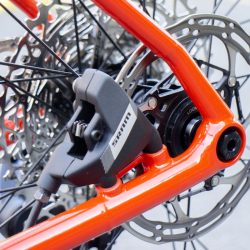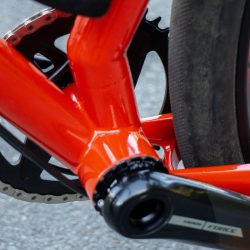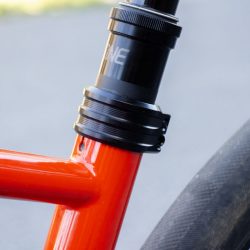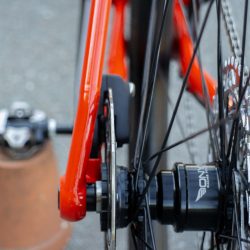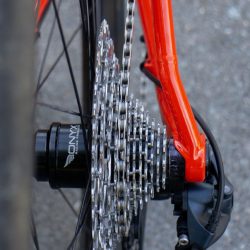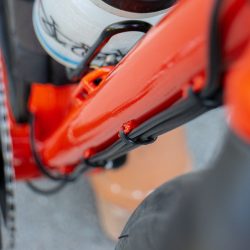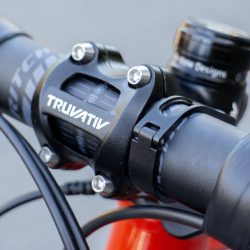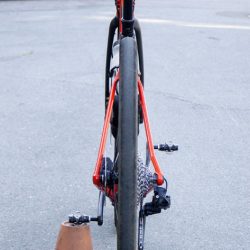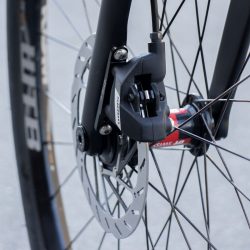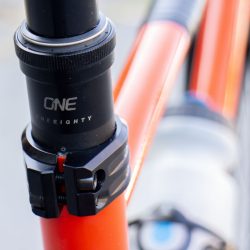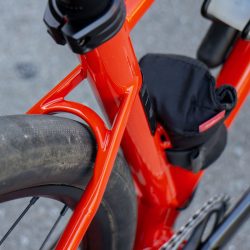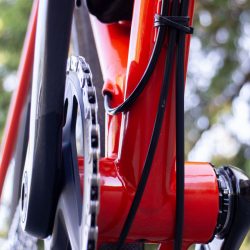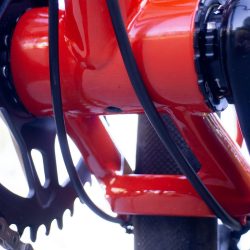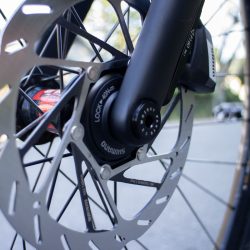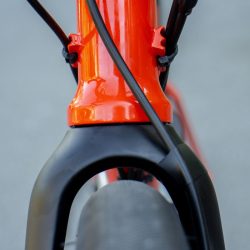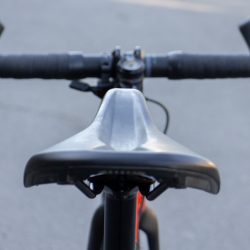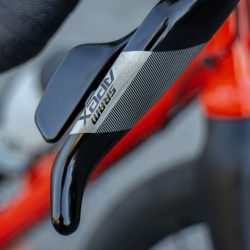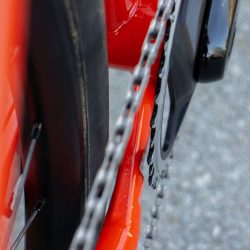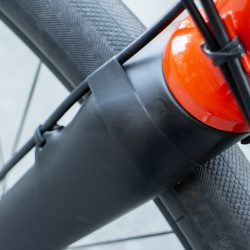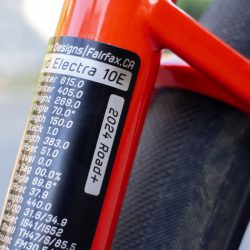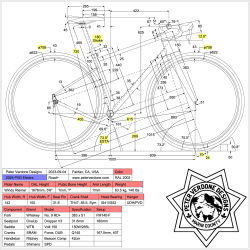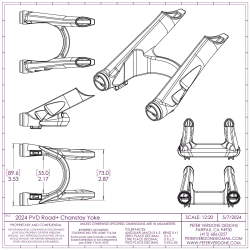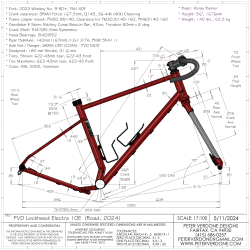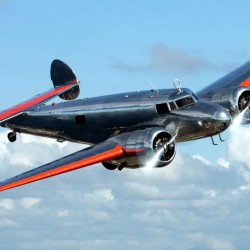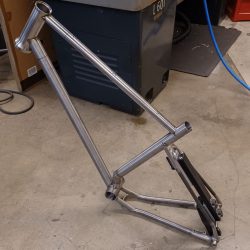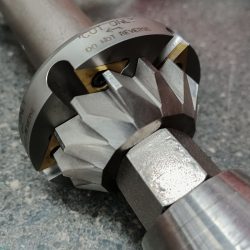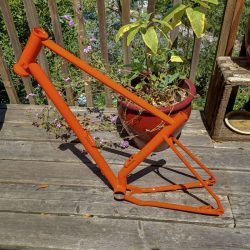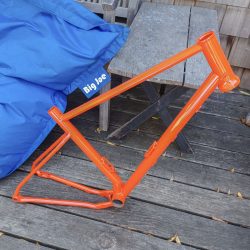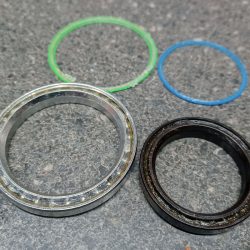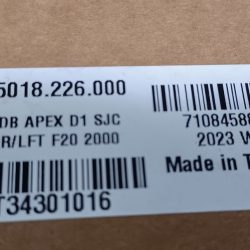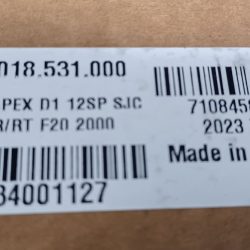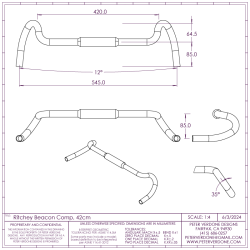This is a new Road+ bike for Windy.
Her last new bicycle frame was the 2023 Vega MTB. That bike was named after Amelia Earhart’s Lockheed 5B Vega. In my mind, it’s one of the nicest looking bikes I’ve ever produced. It’s really an eye catcher!
Staying on theme, this road+ bike is named after Amelia Earhart’s Lockheed Electra 10E Special, NR16020. This is the more famous plane of her’s in the current era as it is the type that she and Fred Noonan were lost in while attempting to circumnavigate the equator in 1937.
Windy has needed a new road bike for a while. Our game of musical bikes had left her without anything very thrilling to fit this role. More, we’d both like bikes for some form of touring. If I can get one built up soon, we will take a trip to Europe and ride around for a bit.
My challenge, given the high and set back handlebar position that Windy prefers, was to make this bike look decent. Extra points if it comes even close to the Vega in its curb appeal. I believe may have I’m going to stew on it for the next few weeks.
I’ll freely admit to not being a roadie. It’s not my happy place. I have done it, though, and have plenty of miles of real experience. So I know the game. I’ll do the work to catch a wheel or make a break rolling into a downhill. But years have passed and so much is different in defining what a modern road bike is. Parts and solutions have changed. Shapes and fits have changed. The biggest real difference between bikes of old and new are tires. The current era has tire sizes of 622-35 to 622-40. That’s wild as tires were 622-23 or often smaller when I started all this at the end of the 1980s.
Among the masses, some will ask, “Isn’t this a gravel/all-road bike?” No. It’s not. With such a tiny front tire, short front center, and drop bars, this bike is simply not optimized for that space. I wouldn’t use that description unless the front tire was over 622-50 and a bit longer front center. Can you ride it in the dirt? Of course. Will it be great there? No. This is a road bike with clearance for large tires. It can traverse a variety of surfaces as the fun necessitates. The riding position is a little more upright and comfortable to suit the desire of the rider. This is road plus.
It’s insane that even after 5 years since I did work in the drop bar space, there are no useful bi-plane handlebars available for this kind of bike. This is a real crime. It prevents very good drop bar bikes from being made, for the uses most folks need. (Reference the the 2019 Airspeeder pictured below.) I don’t have the bandwidth to fight this fight right now so I did my best with commodity handlebars. The bike ends up being a little tall, short, and slack. Not great, but better than most.
We’re starting the fit with the Ritchey Beacon Comp bar in 42cm. With a 36 degree flair, it’s a bit absurd. This places the controls in a terrible location. What helps this rider is the shallow drop of 85mm. I’d rather see a 16-20 degree flair bar with a similar drop instead of what is made here.
Maybe the fashion look will supersede the need to use the controls and everyone will be happy. These bars are absolutely disgusting and stupid but I’m dealing with devils and the shallow drop is beating the control position. If Windy is able to use more hand positions in a meaningful way then this may have been a good choice. It’s terrible to do this. On the plus side, all the Minneapolis Instagram kids will be thrilled.
I took inspiration for the top tube from a tiny road bike by Rob English that I saw in a fancy store in Sausalito. The look of a 1″ round tube ovalized for the top tube is quite delicate and amazing. I called Rob while sitting by the marina and asked him about it. He was nice enough to fill me in on the process. From the side, this tube looks to be 0.875″ which is skinny enough for my first time shaping like this.
The ‘bean can‘ armor on the top tube is protecting the very thin walled top tube from getting damaged by the handlebar end striking it at full swing. The tube is perfectly in the line of fire. Not great looking, but it’s practical insurance against an obvious issue. Using the Kydex material allowed me to easily form the plate to the oval tube profile.
After some discussion with Fern Peck, our local ‘it’ girl, I was convinced to shift the design of the bike toward shorter cranks. She affirmed it’s what all the cool kids are doing on the road these days. You’ll notice the 85mm drop in the frame print. That’s pretty low compared to most commodity frames. When I went to buy the cranks, 165mm SRAM Force 1 cranks (Q145) were out of stock and I was forced to go with 167.5mm (00.6118.659.007). It shouldn’t be a huge issue but I want to be clear that I had intended for the shorter option.
The initial setup for the bike is going to be a 1x system with a 40t (max 44t) chainring and 45mm chainline. If needed, after testing this setup, there is space for a double chainring and I’ll restrict the rear tire size and make a mount for a front derailleur.
The 40t ring backs up to a 10-44t cassette (XG 1251 D1 XPLR 10-44). This is a road bike so the tighter gearing should be nice. But we don’t live in the flattest part of the world so a wide range is needed. I initially paired with a SRAM GX derailleur. So, if gearing proves too tight, I can move to a 10-52 cassette. I’m hoping that I can get a good shift with the small cog. It may be that The Apex D1 (RD-APX-1-D1) should have been chosen but I wanted something a little nicer.
The fork is a Whisky No.9 Road Plus fork. 383x51mm. Rather than a custom fork, I sided with a commodity fork. This one should be light and supple. If I want, later I can make some road forks. The documentation of the Whisky claimed a max of 38mm tire clearance but we always want to check. In hand, I found that I could comfortably fit the 622-43 tire into the fork, so I made the rear of the bike fit the same.
The frame is intended to take tires from 622-35 to 622-43. This put the Maxxis Velocita AR, 622-40, 120TPI, 380g, tubeless. (actually 43mm when on i25mm rims) as the choice for the large tire. Photos are taken with these for the glamor shots. The Continental Grand Prix Urban Tire – 622-35, 330TPI, 345g is the smaller choice. The Grand Prix Urban is not the fanciest of road tires, I’m sure. But those tires have a lot of threads, are priced well, and I expect that the bike will be used mostly with the 622-35 tires.
Controls at the bar are handled by the SRAM Apex D1 units. These are cable actuated and work with the MTB Eagle drivetrains generally used on my mountain bikes. The super duper utterly obvious problem with them….why is there no dropper lever on the left? Instead, nothing. Logic defies what happened here. I’m hoping that this is fixed soon as it’s fucking lame. This is especially terrible as 10 year old Force 11 speed controls did so well.
The dropper is a 180mm OneUp V3. I kept the stroke down on this to give some room for saddle bags and a higher top tube on the frame. It’s still enough to allow for movement around the bike and ease of porting. It really makes this bike look mean.
I had several fancy ‘gravel’ dropper levers on hand to try and set up. An Easton and a Wolf Tooth. Neither worked well. The simple thumb lever that I ended up with is pretty bad but it’s better than the others. Something needs to be done.
Windy wants to be able to use racks on this bike for touring. I need to do more work on the racks here and for another couple bikes. I wasn’t ready to dive into this when I was making this frame and needed to get it moving. But I have some rough plans. You should see something in the next few months.
A few days after ordering prints, I was convinced to change the geometry of the bike (see crank discussion with Fern above). I lowered the crank axis 5mm to account for shorter cranks. This is an issue as the prints were made for one particular geometry. Any change there could render the prints useless. By taking a little time with the frame model in CAD, I swapped in components that were ordered to the new geometry assembly. The chainstay yoke seemed to work fine, the dropouts seemed fine. The issue was the seatstay yoke. There would be some cutting required to fit the part into the frame. This would splay the struts a little wider than desired where they connect to the seat tube. When I got the prints in hand, it was even worse, as distortion had pushed the struts even wider still. So, the connection to the seat tube is a bit clunkier than I had intended but overall, the bike will be better for it.
The chainstay yoke model saw a good deal of improvement in this round of design. The ‘reach around’ scheme is coming together and I’m finding the shape. Especially with this narrow configuration, it makes for a stunning look. I’m excited to bring this model to the MTB format. Yokes are hard. Clearing narrow cranks, large chainrings, and wide tires mean every little thing is a struggle for strength and integrity in the design. That this was produced in the current scheme is wild.
The dropout shape has been optimized for increased heel clearance and good looks while being quite strong. The connection to the seatstay has a small bend to give room for the use of 4 piston post mount calipers in 140/160mm if that is desired, as comes up in extreme setups. The PVD/UDH is a revision that eliminates the fin for improved use in metal.
Color for the frame is RAL #2002 Vermilion with TIGER Drylac 44/00110, Clear Super Flow SD. Windy put a lot of thought into this and it won out over #5020 Ocean Blue and #6017 May Green. Since we learned with the 2023 PVD M2-F2 that there were issues of permeable prints, models got reworked to add a threaded vent hole in the rear end. This keeps internal pressures the same as external. After powder coating, the hole gets plugged with a set screw and some RTV.
The fixture settings used for this frame. Notice that in the validation section, there are some cool direct measure values that can be used directly to the frame. You can look back at that HERE:
2024-05-10, Shakedown #1, Fairfax to Ridgecrest and back.
Both Windy and I wanted to get out and see how well this bike would go. It was an amazing day in Marin and riding Bofax Road is both super easy choice as it’s at the end of the street that I live on and a real test of a true road bike. There were tons of folks out riding one of the nicest road rides in Marin so we were in good company. It was a full shake down ride with a few stops and lots of analysis.
The look of the bike has grown on me quickly. This may have been helped by being surrounded by so many other road and gravel bikes to compare to on todays ride. The Electra is just so dialed. Where other bikes look deflated or lame or slapped together, this bike takes up just the right amount of space in a lot of the right ways.
- I should have made this bike with a 625mm front center, 70.5 degree head angle, and 160mm head tube length. That with a 45mmx0° stem. I had expected the use of a 40mmx0° stem rather than the 60mmx6° that we ended up with. The fit that we have as shown in the prints is excellent, fwiw. We were really shooting in the dark to get a quality fit here and, while this bike is sick, it could have been sicker. The front center and head angle change would have made the bike even nicer on and off road.
- The 85mm BB drop looked and seemed fine for Windy with the 43mm tires. As stated, she isn’t a bloodthirsty barbarian so she’s not pedaling in anger around every turn. Will test 35mm tires next week.
- 40t is a bit tall for the chainwheel for Windy at this point in our lives. While she had enough gear for this ride, we weren’t dragging to get home from a full day where we would need something that would spin. I’m going to get a 38t ring (Rival 38, 00.6218.027.000) on there…maybe even a 36t for emergencies. As she uses so little of the cassette range, this is the right direction to go. Should be on by the end of next week.
- As others have pointed out, the 36° bar flair and the shape of the hoods on the SRAM levers do not play well together at all. What was intended (by SRAM) to reduce high pressure points on the hoods for a lower flair bar become a problem with high flair. Hands rest on a sharper point in the shape. The rider either changes the shape of their arms or gets pummeled by the grip. Going to look into solutions.
- Dropper lever is a problem. Taking hands from the controls to work this makes no sense. It needs to be in the left control lever as had been done in the past. There is no other way to do it well.
- Small setup issue, bike needs two water bottles and an under seat bag. This will be nicer. A part of the reason for just a 180mm stroke dropper was to allow this option. A single bottle in the summer is not a thing.
- A bit of front brake howl under hard braking. With the 2mm thick rotor and heavier SRAM caliper, I’m thinking that this is more a fork or adapter issue. Investigating.




